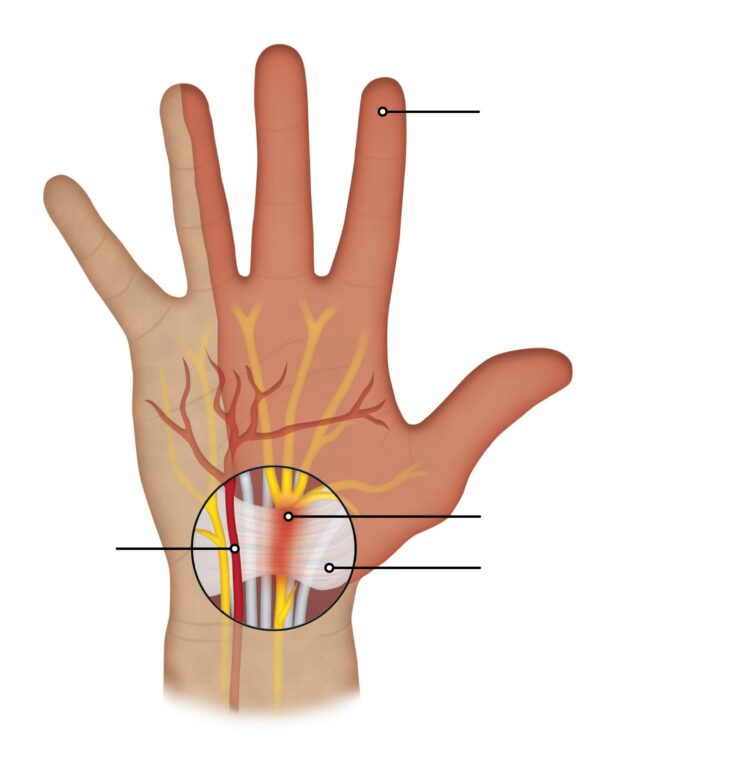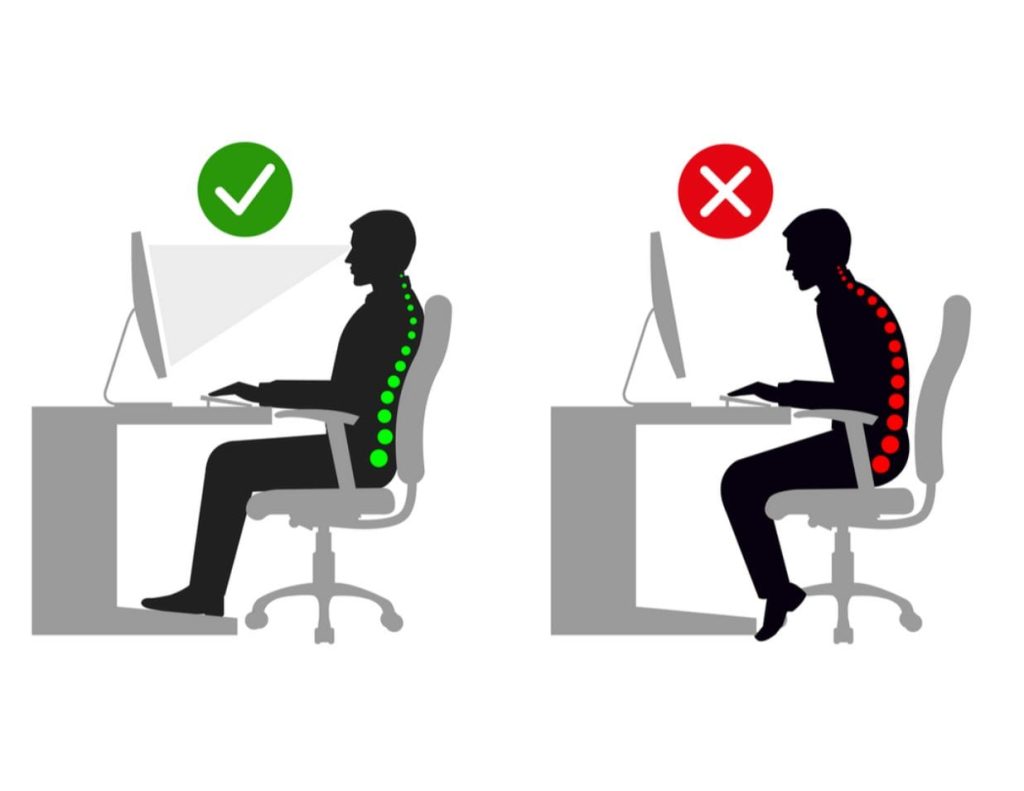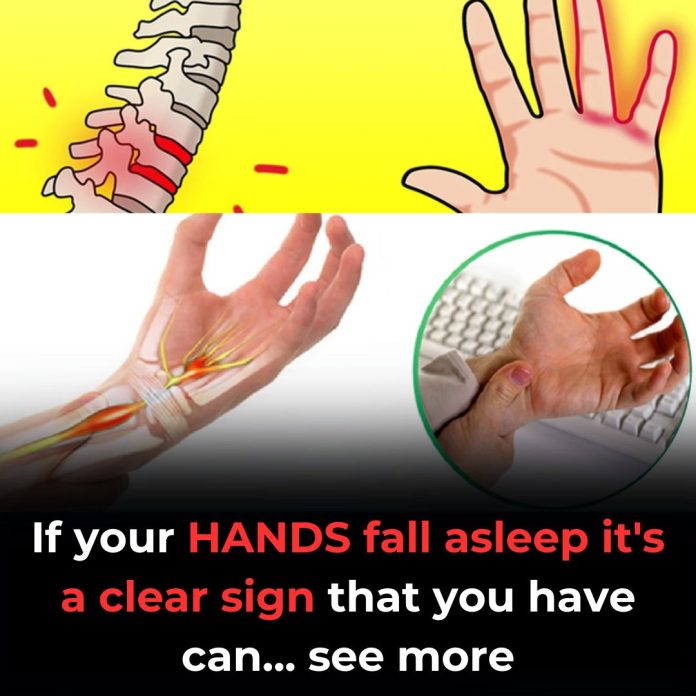Numbness and tingling sensations in the hands are common experiences that can result from various causes, ranging from temporary nerve compression to underlying medical conditions. Understanding these causes is crucial for determining the appropriate treatment and preventing potential complications.
Common Causes of Numbness and Tingling in Hands
Nerve Compression Syndromes:

- Carpal Tunnel Syndrome (CTS): This condition arises from compression of the median nerve as it passes through the carpal tunnel in the wrist. Symptoms typically include numbness, tingling, and pain in the thumb, index, middle, and ring fingers. These sensations often worsen at night and may lead to weakness in hand grip over time. CTS is commonly associated with repetitive hand movements, wrist anatomy, or underlying health conditions.
- Ulnar Nerve Entrapment: Also known as cubital tunnel syndrome, this occurs when the ulnar nerve is compressed at the elbow or wrist. It leads to numbness and tingling primarily in the ring and little fingers. Causes include frequent bending of the elbow, leaning on the elbow for extended periods, or anatomical variations.
- Radial Nerve Compression (Cheiralgia Paresthetica): This condition results from compression of the superficial branch of the radial nerve, often due to tight wristbands or handcuffs. Symptoms include numbness and tingling on the back of the hand near the thumb.
- Peripheral Neuropathy: This refers to damage or dysfunction of the peripheral nerves, leading to numbness, tingling, and pain in the hands and feet. Causes include diabetes mellitus, infections, exposure to toxins, and certain medications. Diabetic neuropathy is a prevalent form, resulting from prolonged high blood sugar levels damaging the nerves.
Systemic Diseases and Conditions:
- Diabetes Mellitus: Chronic high blood sugar levels can lead to peripheral neuropathy, causing numbness and tingling in the extremities.
- Multiple Sclerosis (MS): MS can cause demyelination of nerve fibers in the central nervous system, leading to sensory disturbances, including numbness and tingling in various body parts, including the hands.
- Hypothyroidism: An underactive thyroid can lead to fluid retention and swollen tissues, which may exert pressure on peripheral nerves, resulting in numbness and tingling sensations.
- Raynaud’s Phenomenon: This condition causes some areas of the body, such as fingers and toes, to feel numb and cold in response to cold temperatures or stress. It results from smaller arteries that supply blood to the skin constricting excessively.
- Vitamin Deficiencies: Deficiencies in vitamins such as B1, B6, B12, and E can lead to nerve damage, manifesting as numbness and tingling in the hands and feet.
- Injuries and Trauma: Direct injury to the nerves of the hand or repetitive stress injuries can cause numbness and tingling. For instance, fractures or dislocations can compress or damage nerves.
- Medications and Toxins: Certain medications, including some used for chemotherapy, can cause peripheral neuropathy as a side effect. Additionally, exposure to toxins such as heavy metals can lead to similar symptoms.
- Infections: Certain infections can lead to nerve damage, resulting in numbness and tingling sensations.
When to Seek Medical Attention
While occasional numbness and tingling in the hands can result from temporary nerve compression and may not be a cause for concern, persistent or recurrent symptoms warrant medical evaluation. It is particularly important to seek medical attention if the numbness is accompanied by:
- Weakness in the hands or fingers
- Clumsiness or difficulty holding objects
- Symptoms affecting both hands
- Symptoms that worsen at night or interfere with sleep
A healthcare professional can conduct a thorough assessment, including medical history, physical examination, and possibly diagnostic tests such as nerve conduction studies or imaging, to determine the underlying cause and appropriate treatment.
Preventive Measures and Management
Preventing numbness and tingling in the hands involves addressing underlying causes and making lifestyle modifications:

- Ergonomic Adjustments: Ensure that workstations are set up to reduce strain on the wrists and hands. Use ergonomic keyboards and mouse devices, and maintain proper posture.
- Regular Breaks: Take frequent breaks during repetitive tasks to rest the hands and wrists.
- Wrist Splints: Wearing wrist splints, especially at night, can help keep the wrists in a neutral position and alleviate pressure on nerves.
- Manage Underlying Conditions: Control blood sugar levels if diabetic, maintain adequate thyroid function, and address vitamin deficiencies through a balanced diet or supplements as advised by a healthcare provider.
- Avoid Prolonged Pressure: Refrain from leaning on elbows or wrists for extended periods, which can compress nerves.
- Protect Hands from Cold: Wear gloves in cold environments to prevent vasoconstriction associated with Raynaud’s phenomenon.
In conclusion, numbness and tingling in the hands can stem from a variety of causes, ranging from benign to more serious medical conditions. Understanding these potential causes and seeking timely medical evaluation can aid in effective management and prevention of complications.

















